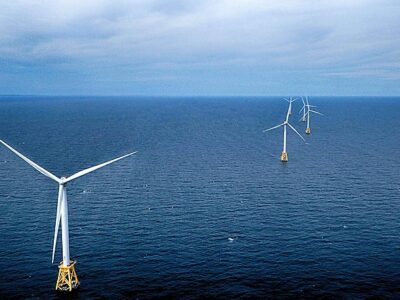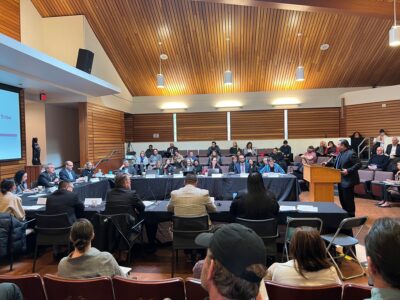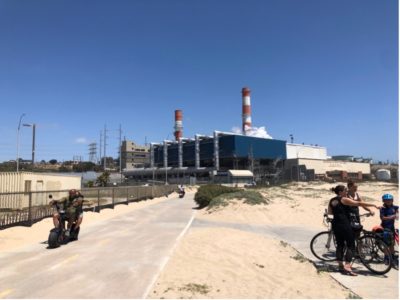Energy
Not Quite a “Windfall Tax”
SBX1-2 passes out of the California Senate… but won’t get Californians their money back.
As Californians endured staggering prices at the gas pump during the summer and fall of 2022—in excess of $2 higher per gallon than the national average—Governor Newsom accused oil companies of “rank price gouging” and vowed to put money back in Californians’ pockets. He announced a special session of the California Legislature to address the …
Continue reading “Not Quite a “Windfall Tax””
CONTINUE READINGA New Battleground in Big Oil’s War on Drilling Setbacks
Big Oil’s referendum on setbacks is the latest in a line of questionable signature-gathering campaigns. Would a new bill reform California’s referendum process?
Earlier this month, my colleague Beth Kent wrote a thorough overview of the referendum seeking to reverse SB 1137, a bill passed by the California Legislature establishing a 3,200-foot setback between new oil and gas wells and sensitive receptors, including homes, schools, and hospitals. That referendum (Ballot Measure 22-0006) will appear on the November 2024 …
Continue reading “A New Battleground in Big Oil’s War on Drilling Setbacks”
CONTINUE READINGStakeholder Engagement in California Offshore Wind Development
State leaders have an opportunity to forge a national example on stakeholder engagement and energy justice.
As California continues to develop plans for floating offshore wind (OSW) implementation, state leaders have an opportunity to forge a national example on stakeholder engagement and energy justice. California can achieve this, not just by (for example) incorporating environmental justice (EJ) principles into agency analysis and planning or by increasing consultation with tribal entities, but …
Continue reading “Stakeholder Engagement in California Offshore Wind Development”
CONTINUE READINGHow Garden-Variety Air Pollution Regulation Promotes Environmental Justice
Cleaning up our nation’s air benefits the disadvantaged most of all.
Evidence is mounting that air pollution regulation is an effective way of reducing health disparities between disadvantaged communities and the population as a whole. The basic reason is simple: Air pollution is the biggest environmental threat to poor communities and communities of color. As the American Lung Association has said: “The burden of air pollution …
Continue reading “How Garden-Variety Air Pollution Regulation Promotes Environmental Justice”
CONTINUE READINGTribal Energy Sovereignty in California
California’s energy agencies hold joint hearing with Tribal governments.
On Thursday, March 2, 2023, California’s principal energy agencies – the California Energy Commission (CEC) and the California Public Utilities Commission (CPUC) – held a first-of-its-kind, joint en banc hearing at Cal Poly Humboldt with Tribal government leaders and all 10 commissioners of the CEC and CPUC. In a world where on-the-ground collaboration between governments …
Continue reading “Tribal Energy Sovereignty in California”
CONTINUE READINGCutting 290,000 Tons of Water Pollution a Year, One Coal Plant at a Time
Coal is a dirty fuel. It’s not just air pollution or climate change.
EPA proposed new regulations next week to reduce the water pollution impacts of coal-fired power plants. As EPA regulations go, these count as fairly minor. They got a bit of news coverage in coal country and industry publications. But they will eliminate the discharge of thousands of tons of pollutants, including a lot of metals …
Continue reading “Cutting 290,000 Tons of Water Pollution a Year, One Coal Plant at a Time”
CONTINUE READINGConnecting New Housing to Needed Energy Service
Why is PG&E taking so long to provide energy to new homes?
An article in the San Francisco Chronicle highlights an apparent pattern of delays on the part of the Pacific Gas and Electric Company (PG&E) in providing energy service to new homes. At a time when policy makers on all levels are pushing for the construction of much-needed housing, the Chron reports that many new homes …
Continue reading “Connecting New Housing to Needed Energy Service”
CONTINUE READINGTop 5 Climate Reasons To Reduce Driving, Even With Electric Vehicles
Sprawl and EVs still have significant carbon costs
California and other jurisdictions have been moving to reduce vehicle miles traveled (VMT) as a climate solution. Yet some pro-sprawl interests question whether this is necessary, given the advent of electric vehicles. It’s fair to ask: if all vehicles are “zero emission,” do we really need to care any more about how much driving we …
Continue reading “Top 5 Climate Reasons To Reduce Driving, Even With Electric Vehicles”
CONTINUE READINGClimate Policy’s “Plan B”
As the initial top-down approach failed, a new approach to climate policy crystalized.
My last blog post told the story of the original top-down approach to climate policy. It was supposed to feature binding restrictions on carbon emissions in a global treaty and federal legislation. By 2012, it was plain that neither half of this “Plan A” strategy was in the offing. Building on trends that had begun …
Continue reading “Climate Policy’s “Plan B””
CONTINUE READINGUnraveling LA’s Hydrogen Combustion Experiment
Combusting hydrogen could keep natural gas plants online, but they won’t be “green” for years––if ever.
This is Part II of “Unraveling Hydrogen,” a series covering the basics of hydrogen policy. The first post, introducing the series and covering how hydrogen is produced, is available here. Led Zeppelin’s eponymous 1969 album featured an iconic photo of the Airship Hindenburg going up in flames above Lakewood, New Jersey in 1937. By all …
Continue reading “Unraveling LA’s Hydrogen Combustion Experiment”
CONTINUE READING













